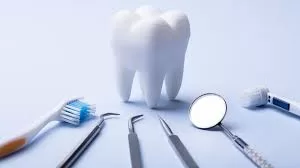
A multinational study has uncovered significant correlations between dental health and the survival rates of individuals diagnosed with head and neck cancer. The study, conducted by researchers from UNC Lineberger Comprehensive Cancer Center and UNC Adams School of Dentistry in Chapel Hill, North Carolina, along with Moffitt Cancer Center in Tampa, Florida, in collaboration with the International Head and Neck Cancer Epidemiology (INHANCE) consortium, was published on September 19, 2023, in the Journal of the National Cancer Institute.
Lead author Jason Tasoulas, MD, DMD, a current PhD candidate, emphasized the comprehensive nature of the research, which involved scrutinizing records of around 2,500 patients from eight different countries. Patients diagnosed with head and neck cancer provided self-reported information regarding various aspects of their oral health and hygiene practices over a ten-year period preceding their cancer diagnosis. These included details about gum bleeding, frequency of tooth brushing, use of mouthwash, number of natural teeth, and the regularity of dental visits.
The findings revealed that individuals who maintained frequent dental visits (more than five visits within the reported decade) exhibited higher overall survival rates at both the five-year (74%) and ten-year (60%) marks, compared to those who had no recorded dental visits (with rates of 54% at five years and 32% at ten years).
This disparity was particularly pronounced in individuals with cancers of the oropharynx, encompassing the structures at the rear of the throat such as the base of the tongue, tonsils, and soft palate. Having no natural teeth remaining was associated with a 15% lower five-year overall survival rate when compared to those with more than 20 natural teeth. Minor survival differences of less than 5%, which did not reach statistical significance, were observed for patient-reported factors like gum bleeding, tooth brushing, and mouthwash use.
While advancements in treatment have led to improved survival rates over the past decades, head and neck squamous cell carcinoma (HNSCC) remains the sixth most prevalent malignancy worldwide, constituting approximately 4% of all cancers in the United States. In 2023, it is estimated that 66,920 individuals will receive a diagnosis of this disease in the U.S. Notably, tobacco use is the primary environmental risk factor, but alcohol consumption and testing positive for the human papillomavirus also elevate a person’s susceptibility to the disease.
Kimon Divaris, DDS, PhD, one of the study authors and James Bawden Distinguished Professor at the UNC Adams School of Dentistry and UNC Gillings School of Global Public Health, highlighted the study’s extensive scope and its consideration of geographic variations, encompassing a wider array of oral health variables compared to previous research efforts.
Antonio L Amelio, PhD, corresponding author and vice chair of research in the Head and Neck Oncology Department at Moffitt Cancer Center, echoed the significance of the findings and emphasized the collaborative nature of the study, which brought together experts from various disciplines around the world.
Carole Fakhry, MD, MPH, the Charles W. Cummings MD Professor of Otolaryngology at Johns Hopkins School of Medicine, who was not involved in the research, underscored the importance of the study in elucidating the interplay between oral health and head and neck squamous cell carcinoma survival rates. She noted that while researchers are actively seeking biomarkers to predict patient outcomes, this study highlights specific aspects of a patient’s history and examination that are closely associated with survival. Furthermore, these findings may pave the way for preventive measures against these types of cancers in the future.










